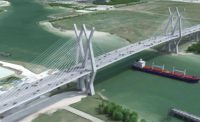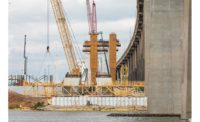On Tuesday, the Coast Guard authorized limited marine traffic in the safety zone in the Port of Houston/Galveston for commercial ship traffic.
"The cleanup operations progress is to the point that there is minimal danger of contamination to the commercial maritime traffic and allowing limited transit during daylight hours," Capt. Brian Penoyer, Captain of the Port for Houston/Galveston said in a statement. "This is an important accomplishment for every person working this response."
A vessel decontamination plan has been formulated to assist vessels that may have been impacted by oil, with stations set up at Pelican Cut, Galveston and Bolivar.
“It’s not just getting the oil out [of the water], it’s taking care of other ends so more oil doesn’t spread,” Torres says.
As of Monday evening, nearly 100 inbound and outbound vessels were waiting at the Port of Houston and Port of Texas City.
Rehabilitation, husbandry and stabilization trailers have been staged along the Texas City Dike, Bolivar Peninsula and an identified rehabilitation location to help any wildlife affected by the spill. Experts from U.S. Fish and Wildlife and Texas Parks and Wildlife Department have captured 18 birds and found 10 deceased as of Tuesday.
So far, no legal ramifications have been determined, and the Coast Guard’s investigation into the incident is ongoing, Torres says.
The oil spill occurred two days shy of the 25th anniversary of the 11-million-gal Exxon Valdez spill in Alaska’s Prince William Sound. That event cost Exxon more than $2 billion in penalties and cleanup costs. A quarter-century after the event, residents of the region are still dealing with the environmental damage.
In April 2010, the Deepwater Horizon spill began. That event, an offshore well explosion that claimed 11 lives, which spilled almost 20 times as much oil as Exxon Valdez disaster, took five months to bring under control. Well owner BP paid $4.5 billion in fines and other costs and was barred from drilling in the Gulf of Mexico for four years.












